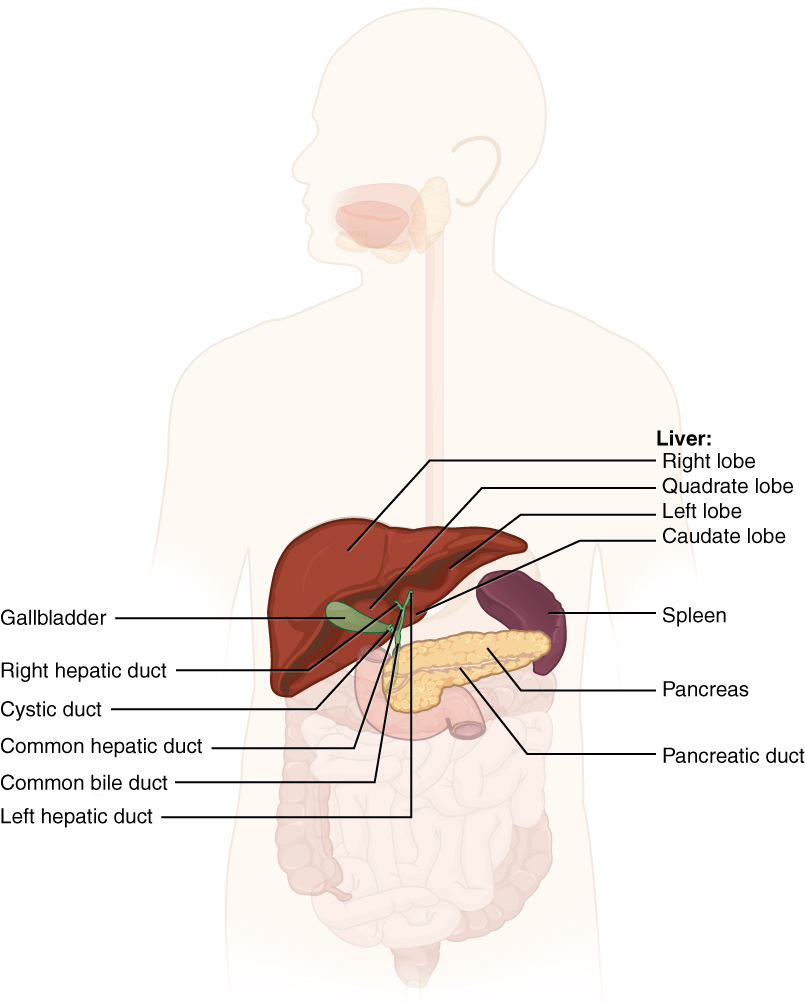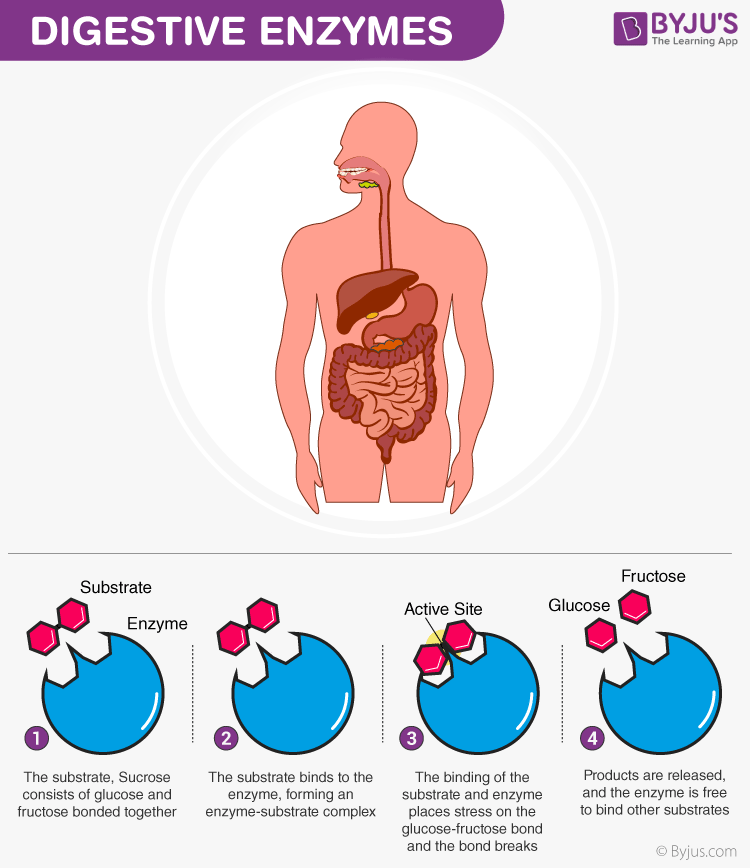6 Which of the Following Organs Produces Amylase
Serum amylase levels increase substantially during acute bouts of pancreatitis but because of its lack of organ specificity in exotic species the diagnostic value of amylase. It takes hours to complete this complex process which results in simple sugars.

Unit 5 The Digestive System Douglas College Human Anatomy Physiology Ii 2nd Ed
1 mark maltose 8.

. However amylase is produced in either the salivary glands pancreas or small intestine. 1 mark maltase - Molecule Y. Salivary glands produces Salivary amylase and it acts upon starch to produce maltose.
The liver produces bile juice which does not have any digestive enzymes but only bile salts and bile pigments are present in it. Amylase is an enzyme that helps to break down starch into simpler sugars. Specific amylase proteins are designated by different Greek.
Pancreatic amylase finishes digestion of carbohydrates producing. This lesson defines pancreatic amylase and lipase lab values and causes of elevation. The salivary gland produces amylase enzyme in saliva.
Large amounts of pancreatic amylase are released into the duodenum via the pancreatic duct to continue the digestion of the incoming starch. Which of the following organs is not an accessory organ of the digestive system. In the digestive systems of humans and many other mammals an alpha-amylase called ptyalin is produced by the salivary glands whereas pancreatic amylase is secreted by the pancreas into the small intestine.
In the following reaction product X could be an X Y lipase fat H 2 O A. Which of the following organs produces and secretes enzymes that are essential for proper digestion. The pancreas produces two enzymes known as amylase and lipase.
Firstly salivary glands in our mouth generate salivary amylase that starts the process of digestion by breaking down starch and converting into maltose and smaller carbohydrate. In many animals amylase is excreted by the kidney. Pancreas _____ is the sum of all chemical reactions that occur in living cells.
Learn vocabulary terms and more with flashcards games and other study tools. Pancreas produces amylase trypsin lipase and two nucleases in the pancreatic juice. The stomach produces pepsinogen which is activated into pepsin enzyme.
Salivary glands provides moisture in form of saliva to make food easier to swallow releases salivary amylase which begins chemical digestion of starch helps to produces a moist ball of food called a bolus e. A The diagrams illustrate a reaction that occurs in the small intestine. Pancreas produces proteases trypsin lipases and amylases which acts upon proteins and fats and produces Peptides and amino acids Fatty acids and glycerol and maltose.
19 Which organ produces bile that helps in the digestion of fats. The digestive enzymes are produced and transported by acinar cells which are exocrine cells of the pancreas. Up to 24 cash back 6.
Ionized calcium is required for this process. Question 4 2 pts Carbohydrate digestion via enzymes does NOT occur in which of the following organs. The second functional component of the pancreas is the endocrine pancreas.
Pharynx region at back of throat where food and air must cross pathways to go sown the appropriate tubes food down esophagus air down trachea f. 21 What are. 17 What organs produce enzymes that digest carbohydrates.
Amylase is one of the many different kinds of enzymes that are found within the body. The small intestine and the salivary glands are the organs of the digestive system that produces the enzyme amylase. Does the pancreas produces lipases and amylase.
Select all that apply. Give the specific name for each of the following. Plants and some bacteria also produce amylase.
O mouth stomach gallbladder small intestine Question 6 2 pts Which of the following regarding diabetes isare true select all that apply. Alpha-amylase is widespread among living organisms. Does the pancreas produces lipases and amylase.
Which of the following enzymes is correctly matched with its site of production. However amylase is produced in either the salivary glands pancreas or small intestine. Start studying Anatomy Chapter 111-1110.
The enzyme amylase is produced by which organs. Amylase produced by the pancreas enters the small intestine to assist in digestion by hydrolyzing complex carbohydrates. Amylase produced by the pancreas enters the small intestine to assist in digestion by hydrolyzing complex carbohydrates.
Stomach produces pepsin which acts upon proteins and produces partly digested proteins. Cells in pancreas also produce a different type of amylase known as pancreatic amylase that travels via a duct to reach the small intestine. Trypsin salivary glands.
Salivary glands and liver. Page 25 of 28 d. Amylase is one of the many different kinds of enzymes that are found within the body.
Amylase functions within the mouth or the small intestine. Secretory cells of the stomach are located where a. The small intestine and the salivary glands are the organs of the digestive system that produces the enzyme amylase.
The pancreas and salivary gland make amylase alpha amylase to hydrolyse dietary starch into disaccharides and trisaccharides which are converted by other enzymes to glucose to supply the body with energy. 20 What digestive enzymes does the liver produce. Up to 24 cash back 31.
Gestational diabetes only occurs during pregnancy it is characterized by blood glucose levels. The optimum pH of alpha-amylase is 6770. Your digestive system breaks down nutrients you consume in food converting them into small molecules that your cells tissues and organs use as fuel and for hundreds of metabolic functions.
18 Which of the following organs of the digestive system secretes acid and enzymes. Pancreas and salivary glands. The liver appears to be involved in other animals.
What Are the Functions of Amylase Protease and Lipase Digestive Enzymes. Answer - salivary glands and pancreas amylase is an digestive enzyme which is produced in salivary glands View the full answer. In the small intestine which of the following enzymes are NOT produced by the brush border.
Ionized calcium is required for this process. 16 Which of the following digestive system organs is an accessory organ.

Body Organs And Illness Human Digestive System Digestive System Anatomy Human Anatomy And Physiology

Accessory Organs In Digestion The Liver Pancreas And Gallbladder Anatomy And Physiology

Pin By William Harrison On Enfermeria Human Digestive System Human Anatomy And Physiology Basic Anatomy And Physiology

Gi System B Line Drawing Nursing Student Humor Nursing School Studying Medical School Studying

Digestive System Human Digestive System Digestive System For Kids Human Anatomy And Physiology

Human Digestive System Digestive System Anatomy Basic Anatomy And Physiology

ว ทยาศาสตร Human Digestive System Human Body Systems Digestive System Diagram

Digestive Enzymes And Its Types Amylase Protease And Lipase
15 3 Digestive System Processes Concepts Of Biology 1st Canadian Edition
Digestion And Absorption Of Carbohydrates

Step By Step Tutorials On Drawing Biology Diagrams Human Digestive System Digestive System Diagram Human Respiratory System

Homeschooler S Resources Apologia General Science Module 13 The Human Digestive System Human Digestive System Apologia General Science Human Body Science

Lesson Explainer Enzymes In Digestion Nagwa

This Slide Focuses On Exocrine Pancreatic Insufficiency Or Epi Which Occurs When The Pancreas Becomes Damaged And Is No Digestive Enzymes Pancreas Pancreatic

Acute Pancreatitis Acute Pancreatitis Human Digestive System Teaching Biology
Anatomy Of Organs Of The Digestive System And Their Functions Bio103 Human Biology



Comments
Post a Comment